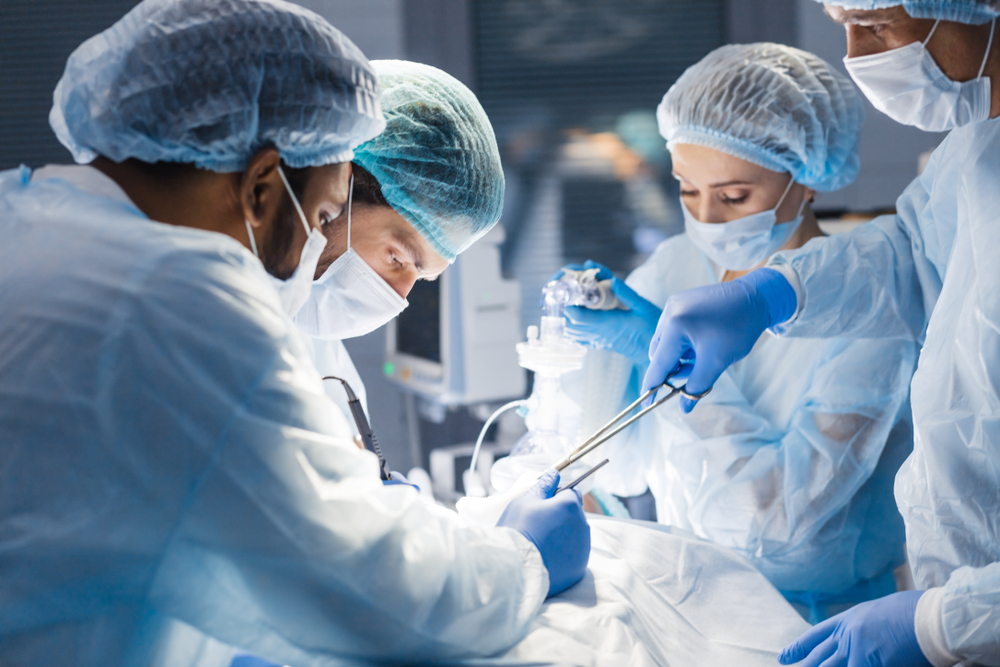Reconstructive Plastic Surgery for Congenital Hand Anomalies

Congenital hand anomalies refer to structural abnormalities that are present at birth, affecting the formation and function of the hand. These anomalies can have a significant impact on an individual's quality of life, affecting their ability to perform daily tasks and participate in various activities. However, reconstructive plastic surgery offers a transformative solution, aiming to improve hand function, restore aesthetics, and enhance the overall well-being of individuals with congenital hand anomalies.
Understanding Congenital Hand Anomalies
Congenital hand anomalies encompass a range of conditions, each characterised by specific abnormalities in hand structure. Some common types include syndactyly, polydactyly, thumb hypoplasia/aplasia, radial clubhand, and brachydactyly. Syndactyly refers to fused fingers, while polydactyly involves the presence of extra fingers or thumbs.
Thumb hypoplasia/aplasia is the underdevelopment or absence of the thumb, which is a crucial digit for hand function. Radial clubhand is characterised by an underdeveloped or absent radius bone, resulting in a curved forearm and limited hand movement. Brachydactyly involves shortened fingers, usually due to abnormal bone growth.
Causes and risk factors for congenital hand anomalies can vary. Some anomalies may have a genetic basis, while others may result from environmental factors or a combination of genetic and environmental influences. Factors such as maternal smoking, certain medications, maternal illness, and exposure to toxins during pregnancy may contribute to the development of these anomalies.
Reconstructive Plastic Surgery Approaches
Reconstructive plastic surgery plays a vital role in the treatment of congenital hand anomalies. The process begins with a comprehensive preoperative evaluation, which includes a detailed assessment of the hand's structure, function, and aesthetic appearance.
Surgeons collaborate with a multidisciplinary team, including hand surgeons, paediatricians, geneticists, and occupational therapists, to determine the most appropriate treatment plan.
The timing of surgery is a crucial consideration, with procedures often performed during infancy, childhood, or adulthood, depending on the specific anomaly and its impact on hand function and development. Early intervention is often recommended to promote optimal hand growth and function.
Different types of reconstructive surgery techniques are utilised for specific congenital hand anomalies. For instance, syndactyly release and web space reconstruction involve surgically separating fused fingers and reconstructing the web spaces between them.
Polydactyly correction entails the removal of extra fingers or thumbs and the restoration of normal finger alignment. Thumb reconstruction procedures aim to create or reconstruct a functional thumb, utilising various techniques such as bone grafting, tendon transfer, and microvascular surgery.
Radial club hand correction focuses on realigning the forearm bones, improving hand function, and correcting the curved appearance. Brachydactyly correction procedures involve lengthening the affected fingers using techniques like distraction osteogenesis.
Reconstructive plastic surgery techniques utilise different approaches such as tissue expansion, flap surgery, skin grafting, and microvascular surgery. Tissue expansion involves the gradual stretching of surrounding tissues to create additional skin and soft tissue, which is useful in procedures like thumb reconstruction.
Flap surgery utilises nearby tissues to cover defects and reconstruct missing structures. Skin grafting involves transferring skin from one area of the body to another and is commonly used in syndactyly release. Microvascular surgery involves reattaching blood vessels and nerves, allowing for precise tissue transfer and re-establishing blood supply.
Benefits and Outcomes - Reconstructive Plastic Surgery
Reconstructive plastic surgery for congenital hand anomalies offers numerous benefits to individuals. Improved hand function and dexterity enable individuals to perform daily activities, such as grasping objects, writing, and self-care tasks, with greater ease. Restoration of hand aesthetics plays a significant role in enhancing self-esteem and confidence.
Individuals with congenital hand anomalies often face psychological and social challenges due to physical differences, and reconstructive surgery can alleviate these burdens, promoting a sense of normalcy and acceptance.
The success rates of reconstructive plastic sur gery for congenital hand anomalies are generally high, with many individuals experiencing significant improvements in hand function and appearance. However, as with any surgical procedure, there are potential complications that may arise.
These can include wound healing issues, infection, scarring, and the need for additional surgeries or revisions. It is paramount for individuals and their families to have realistic expectations and engage in thorough discussions with their healthcare providers to fully understand the potential risks and benefits associated with surgery.
Rehabilitation and Postoperative Care - Reconstructive Plastic Surgery
Rehabilitation and postoperative care play crucial roles in the success of reconstructive surgery for congenital hand anomalies. Hand therapy and occupational therapy are key components of the rehabilitation process.
These therapies aim to improve hand strength, range of motion, coordination, and sensory function. Rehabilitation exercises and activities are tailored to the specific needs of each individual, gradually progressing as they regain function and adapt to the changes in their hand structure.
Long-term follow-up care is essential to monitor progress, identify any potential issues, and make necessary adjustments. Regular evaluations by the surgical team allow for ongoing support and the modification of therapy programs as needed.
Emotional support and counselling are also crucial throughout the process, helping individuals and families cope with the challenges associated with congenital hand anomalies and surgery.
Advancements in Reconstructive Surgery Techniques
Advancements in reconstructive surgery techniques continue to expand treatment options and improve outcomes for individuals with congenital hand anomalies. Emerging technologies such as 3D printing and customised prosthetics allow for precise and personalised solutions. 3D printing enables the creation of patient-specific models, implants, and surgical guides, aiding in surgical planning and execution.
Nerve regeneration techniques show promise in restoring sensory and motor function to affected hands, further enhancing the outcomes of reconstructive surgery. Ongoing research and collaboration among medical professionals are driving future advancements in the field, providing individuals with congenital hand anomalies with even more innovative and effective treatment options.
Conclusion
Reconstructive plastic surgery is a transformative solution for individuals with congenital hand anomalies, offering improved hand function, restored aesthetics, and enhanced quality of life. Through a multidisciplinary approach and surgical techniques, these anomalies can be effectively addressed, allowing individuals to overcome functional limitations and psychological challenges.
Advances in surgical techniques and technologies continue to push the boundaries of what is possible, providing individuals with congenital hand anomalies with increasing opportunities for improved outcomes and brighter futures.
Visit a super-speciality hospital today to get plastic surgery done immediately!






